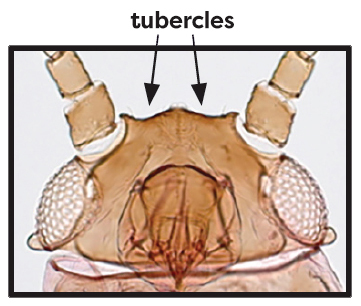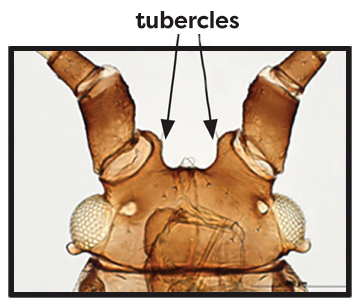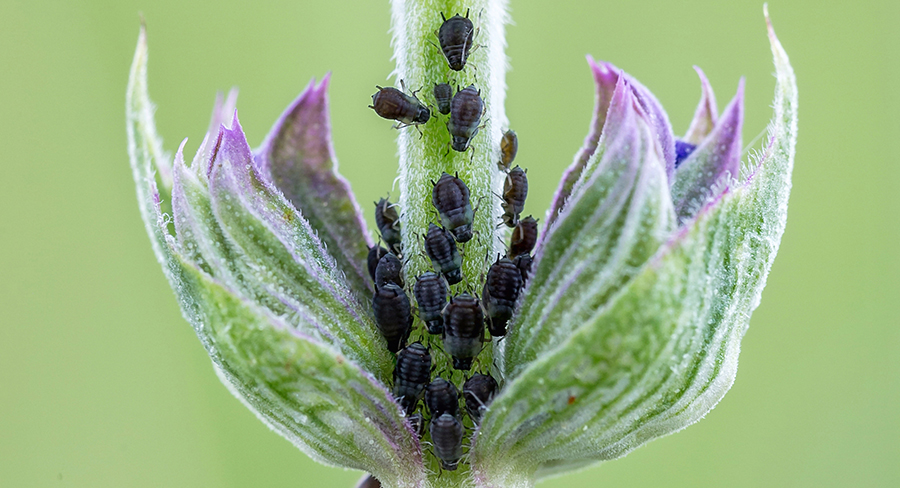While there are only about a half-dozen aphid species that pose a threat to greenhouse plants, the control strategies can differ greatly.
It seems appropriate in a discussion about battling aphids to paraphrase a quote by Sun Tzu from his book The Art of War: “If you know the enemy and know yourself, you need not fear the result of a hundred battles. If you know yourself but not the enemy, for every victory gained you will also suffer a defeat.”
Though he was referring to military strategy, in reality, there’s not much difference when the enemy is six-legged and threatening the health of a crop. This is especially true with aphids, which can have an exponential growth rate and cause significant harm to plants.
The first thing a grower needs to do to treat an aphid issue is to identify what kind of aphid has infested the crop. Aphids, though they can vary widely in color and relative size, are fairly easy to distinguish from other plant pests.
A unique feature of these sap-stealing foes are the “tail pipe” structures on their rear abdomen, called cornicles, which are used to excrete a warning chemical when attacked. You may also notice shiny honeydew on leaves or sooty mold growing on the honeydew — a sign that aphids have been feeding. An increase in the number of ants crawling up pots and benches can also clue you in to aphid populations, since ants are known to farm and protect aphids for the sug-ary, sticky waste aphids produce as a byproduct of feeding on plant phloem. But, with 5,000 different possible aphid species worldwide, the task of differentiating them becomes a bit trickier.
Why Proper ID Is Critical
Many people assume that because they have identified their pest as an aphid that the work is done. Not so! Identifying the genus (at a minimum) can save you a lot of time and money. Here is a list of reasons why it could be important to properly identify the genus or species of the aphid on your plant:
How to Know Which Aphids You’re Battling
Aphid Name
Host Plants
Location
on Host
Tubercle
Notching
Image of Tubercle and link with more information
Melon/Cotton (Aphis gossypii)
Many (more than 135 plant families); very common aphid
Toward plant interior, on stems or flower buds; implicated in transmission of more than 50 plant viruses
No notch between two antennal tubercles
Other Feature(s): Cornicles are dark
Green Peach (Myzus persicae)
Many (more than 130 plant families); very common aphid
Tend to be high on plants, near the growing tips; implicated in transmission of more than 180 plant viruses
Has a notch; tubercles converge
Other Feature(s): Cornicles same color as body, but dark on tips
Potato (Macrosiphum euphorbiae)
More than 90 plant families, but common on: Abutilon, carnation, cineraria, lettuce, rose, tomato, tulip, etc.
Implicated
in the transmission
of nearly 70 plant viruses
Has a notch; tubercles diverge
Other Feature(s): Often have a slightly dark line visible down the back; various body colors
Foxglove (Aulacorthum solani)
More than 82 plant families but common on anemone, arum, calceolaria, carnation, cineraria, dahlia, geranium, gloxinia, lettuce, nasturtium, etc.
Implicated in transmission of at least 45 plant viruses
Has a notch; tubercles nearly parallel
Other Feature(s): Body usually dark and shiny, often has dark patches near base of cornicles
- If you want to use parasitic wasps as biological control, you must know the aphid species, as many parasitic wasps are host specific. This is not nearly as important with other generalist predators.
- It can help determine where you should focus your spray efforts on the plant, as some aphids prefer to colonize specific areas of the foliage, stem, or roots.
- It can help determine if all plants in an area require management or if just one or a few varieties will need treatment.
- Different aphid species can cause different levels of damage, such as leaf curling and distortion, and so have a different threshold for treating. Some aphids are also known to transmit viruses. The threshold for these aphids is lower than for aphids that don’t vector viruses.
- It will help in differentiating aphids that you have on banker/insectary plants vs. pest aphids.
The good news is that there are only about six or so species of aphids common to greenhouses. By looking, with good magnification and lighting, from a top rear view, at the notch on their head between the antennae called the tubercles, you can differentiate these four species (see the chart on page 24 for the identifying characteristic and notes on biology).
If you can’t identify the aphid, it is recommended that you reach out to your local Extension agent or other person knowledgeable in insect identification. Bring in a bagged branch with live aphids, or put multiple specimens of the aphids in a container with 70% isopropyl alcohol when submitting a sample.
Fortunately, many predators and parasites like to feed on aphids, and successful biocontrol is possible. Biorational products such as the entomopathogen Beauveria bassiana, and the natural insect growth regulator azadirachtin, as well as soaps and oils can all be used, along with good scouting, into a highly effective integrated pest management program. But, first, you must ‘Know thy aphid’!
Originally published in Greenhouse Grower of Meister Media.






